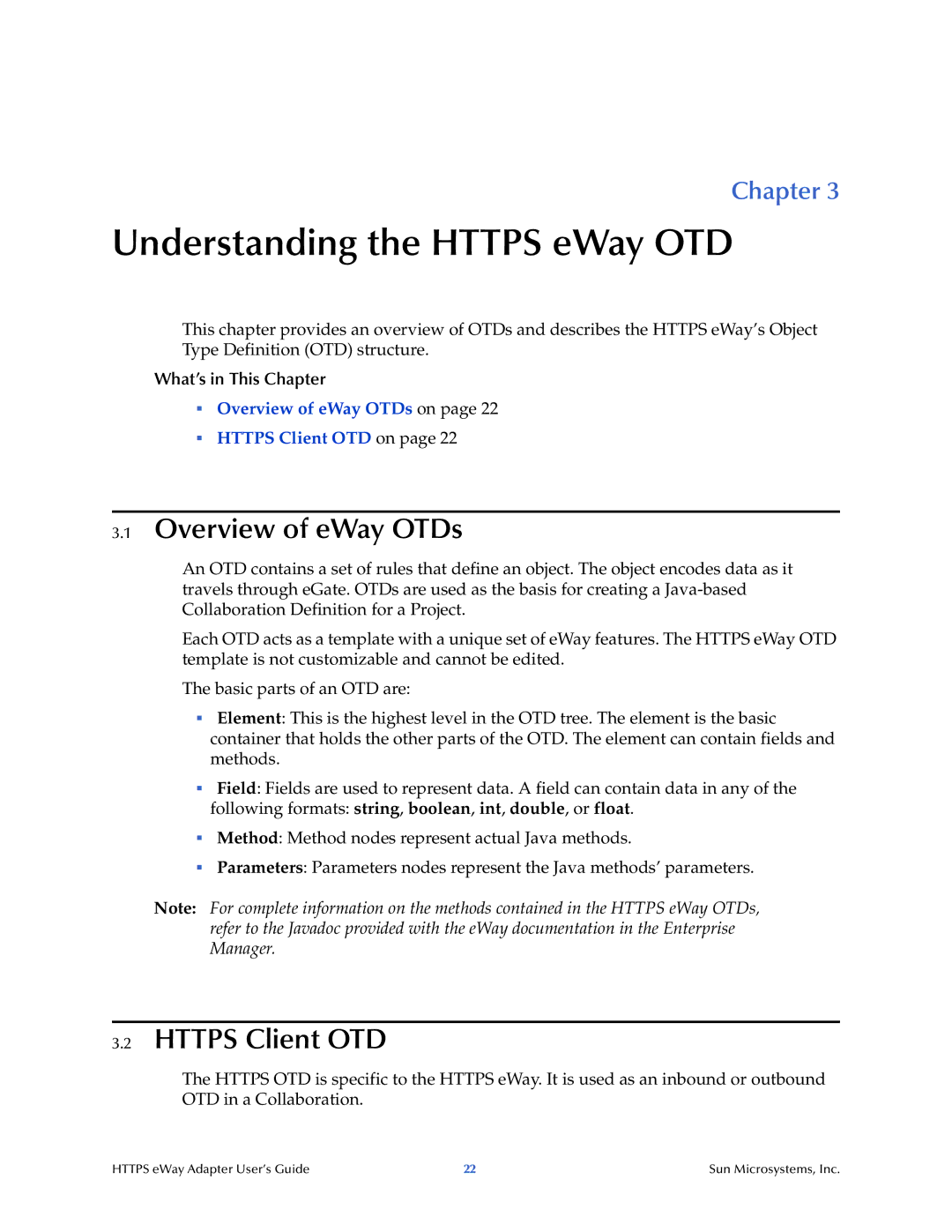
Chapter 3
Understanding the HTTPS eWay OTD
This chapter provides an overview of OTDs and describes the HTTPS eWay’s Object Type Definition (OTD) structure.
What’s in This Chapter
Overview of eWay OTDs on page 22
HTTPS Client OTD on page 22
3.1Overview of eWay OTDs
An OTD contains a set of rules that define an object. The object encodes data as it travels through eGate. OTDs are used as the basis for creating a
Each OTD acts as a template with a unique set of eWay features. The HTTPS eWay OTD template is not customizable and cannot be edited.
The basic parts of an OTD are:
Element: This is the highest level in the OTD tree. The element is the basic container that holds the other parts of the OTD. The element can contain fields and methods.
Field: Fields are used to represent data. A field can contain data in any of the following formats: string, boolean, int, double, or float.
Method: Method nodes represent actual Java methods.
Parameters: Parameters nodes represent the Java methods’ parameters.
Note: For complete information on the methods contained in the HTTPS eWay OTDs, refer to the Javadoc provided with the eWay documentation in the Enterprise Manager.
3.2HTTPS Client OTD
The HTTPS OTD is specific to the HTTPS eWay. It is used as an inbound or outbound OTD in a Collaboration.
HTTPS eWay Adapter User’s Guide | 22 | Sun Microsystems, Inc. |
